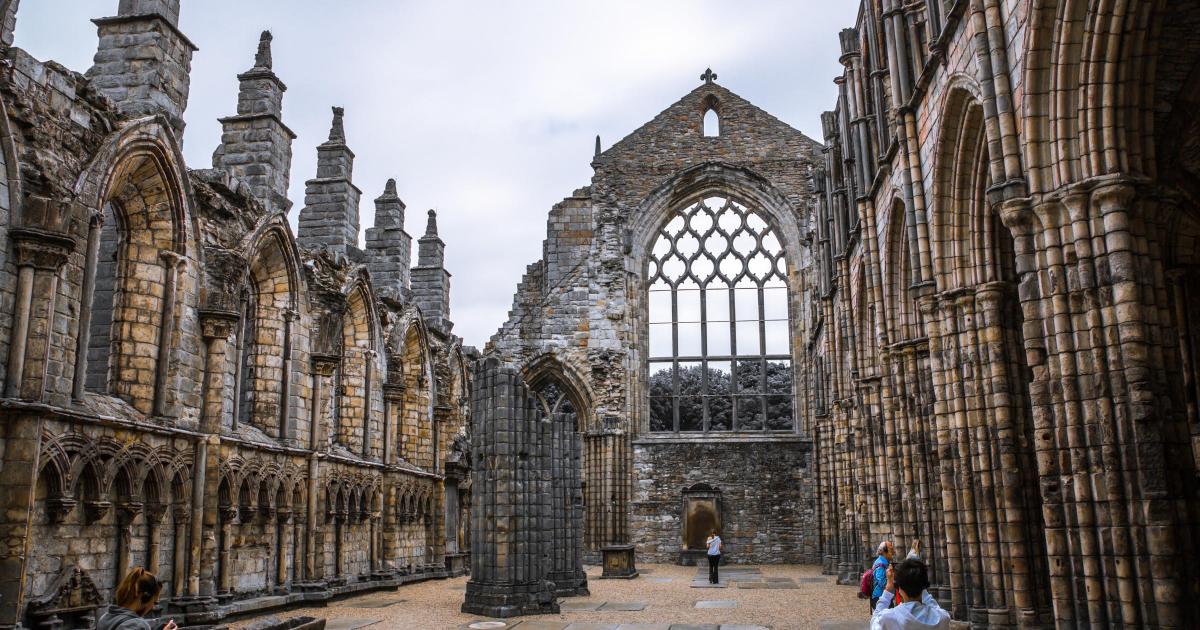However, its time in the limelight would come to a sudden and violent end during the Scottish Reformation.
Most of what survived from this episode was the nave, which was spared by the Protestants so that it could serve as the parish church of Canongate.
Before this upheaval, the Stewart monarchs are said to have “almost entirely” taken over the canons’ cloister.
The abbey’s time in the limelight would come to an end during the Scottish Reformation(Image: Getty Images/iStockphoto)
The ruined abbey in the heart of Edinburgh that was once the epicentre of power in Scotland
Discussing why the Scottish abbey was so important to the Stewarts, senior cultural significance adviser at Historic Environment Scotland, Nicki Scott, said: “I think as much as anything, it’s location, obviously it’s basically just down the road from Edinburgh Castle, which was then, as it is now, the iconic castle for Scottish kings.”
This closeness was said to provide a high degree of security, while allowing royals to “live a much more luxurious life” away from the confines of the fortress.
While royals may have made the move away from the famous keep to distance themselves from its military reputation, Edinburgh Castle was, by no means, a “dark, dreary and damp” place to live.
It was just that the abbey was easier to expand and maintain as it did not sit atop a rocky outcrop.
In 1687, years after much of the site was destroyed during the Reformation, James VII of Scotland and II of England made the decision to evict the nave’s Protestant congregation. He then restored the site as a chapel under his revived Order of the Thistle.
However, this would not last, with the chapel being ransacked and James forced into exile within a year.
Despite these events having a massive impact on the monument, Nicky Scott explains that there was not one single “catastrophic” event that turned the site into a wreck, with earlier English invasions in the 1540s, neglect over the centuries and the rise of the idea of “romantic ruins” playing a part.
As has been the case with other monuments around the globe, much of the structure was also nicked by locals to build their homes.
Scott added that this was the “sensible thing to do” at the time, but joked: “We, obviously, discourage that nowadays, people just turning up and taking bits.”
The history of the abbey goes back much further than the reign of the Stewarts, with it having been founded by David I in 1128.
Nowadays, the cloister precinct is occupied by the modern Renaissance palace of Holyroodhouse.
The abbey is also the burial ground for many Scottish royals, including, but not limited to, James V and King Henry, more widely known as Lord Darnley, the second husband of Mary Queen of Scots.
Recommended Reading:
When asked if the abbey would be one of the grandest in Scotland if it had been allowed to survive, Nicki said: “Certainly, from what we have left of the architecture of the medieval abbey, it’s certainly amongst the most sophisticated that was produced.”
Citing the “late, great” historian of medieval architecture and art, Richard Fawcett, she added that it could rival anything in England and certainly rivals anything built in Scotland.
The site can sometimes be forgotten about by those visiting the Palace of Holyroodhouse, with Nicki urging people not to neglect this wonderful “haven in the city”.
